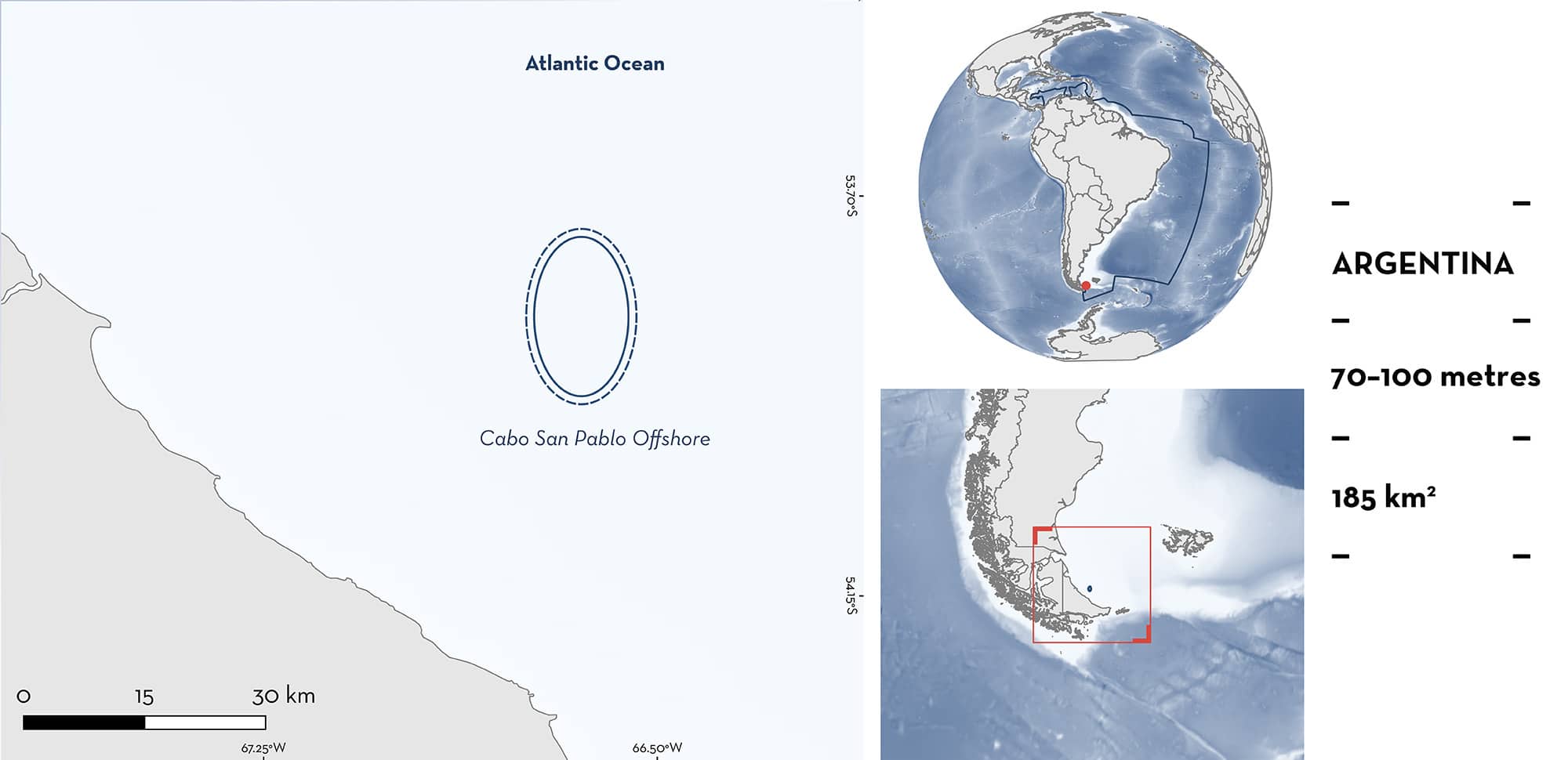ISRA FACTSHEETS
ISRA FACTSHEETS
SOUTH AMERICAN ATLANTIC REGION
Cabo San Pablo Offshore
Summary
Cabo San Pablo offshore is located off the coast of Tierra del Fuego Province, Argentina. It includes part of the Patagonian Shelf. The habitat is characterised by mud, fine and medium sand, and gravel substrates. The area is influenced by the northward-flowing Malvinas Current and by strong tidal currents. Within this area there are reproductive areas (Narrowmouth Catshark Schroederichthys bivius).
Download factsheet
Cabo San Pablo Offshore
DESCRIPTION OF HABITAT
Cabo San Pablo offshore is located ~34 km off the coast of Tierra del Fuego Province, Argentina. It includes part of the Patagonian Shelf. The habitat is characterised by mud, fine and medium sand, and gravel substrates (Violante et al. 2014). The area is influenced by the northward-flowing Malvinas Current, which carries cold, nutrient-rich subantarctic waters along the continental slope (Guihou et al. 2020), and by strong tidal currents that enhance mixing and nutrient distribution across the shelf (Violante et al. 2014).
This Important Shark and Ray Area is benthic and subsurface and is delineated from 70–100 m based on the bathymetry of the area.
CRITERION C
SUB-CRITERION C1 – REPRODUCTIVE AREAS
Cabo San Pablo offshore is an important reproductive area for one shark species.
High densities of egg cases are found in the area for Narrowmouth Catshark (Matusevich et al. 2023). Between 2016–2018, four research cruises conducted bottom trawls in the southern part of the southwest Atlantic at depths of 33–785 m (Matusevich et al. 2023). Sampling employed a small bottom trawl net (50 mm mesh in the wings, and 20 mm in the cod end; horizontal opening 6 m) with trawling durations of 5–20 minutes at speeds of 1.5–5 knots, resulting in a total of 110 fishing hauls. Catch-per-unit-effort (CPUE) for egg cases of each species was calculated based on the area swept by survey trawls (Alverson & Pereyra 1969) expressed as individuals per km2 (egg cases/km2). After taxonomic identification, the number of egg cases per haul for each species was recorded (Matusevich et al. 2023).
Between 2016–2018, Narrowmouth Catshark egg cases (n = 36) were collected in the area and adjacent regions of the southern Patagonian Shelf (Matusevich et al. 2023). The egg cases were found at depths ranging from 71–119 m, with the highest densities recorded at 78 m (Matusevich et al. 2023). The density of Narrowmouth Catshark egg cases ranged between 282–1,483 egg cases/km2 (Matusevich et al. 2023). The area encompasses one of the three hauls with the highest egg case densities, while the other two were collected from Tierra del Fuego. All the egg cases with embryos were captured within this area (n = 4) and Tierra del Fuego (n = 5) in November, highlighting that the area is an important egg-laying ground for this species. Among the 13 species of sharks and rays encountered during these surveys across the region, this species had the highest number of embryos (n = 9) out of the 18 recorded. Due to the different stages of embryos found during the austral spring (initial, intermediate, and advanced), a year-round oviposition in the area was suggested (Matusevich et al. 2023).
Download factsheet
SUBMIT A REQUEST
ISRA SPATIAL LAYER REQUEST
To make a request to download the ISRA Layer in either a GIS compatible Shapefile (.shp) or Google Earth compatible Keyhole Markup Language Zipped file (.kmz) please complete the following form. We will review your request and send the download details to you. We will endeavor to send you the requested files as soon as we can. However, please note that this is not an automated process, and before requests are responded to, they undergo internal review and authorization. As such, requests normally take 5–10 working days to process.
Should you have questions about the data or process, please do not hesitate to contact us.


